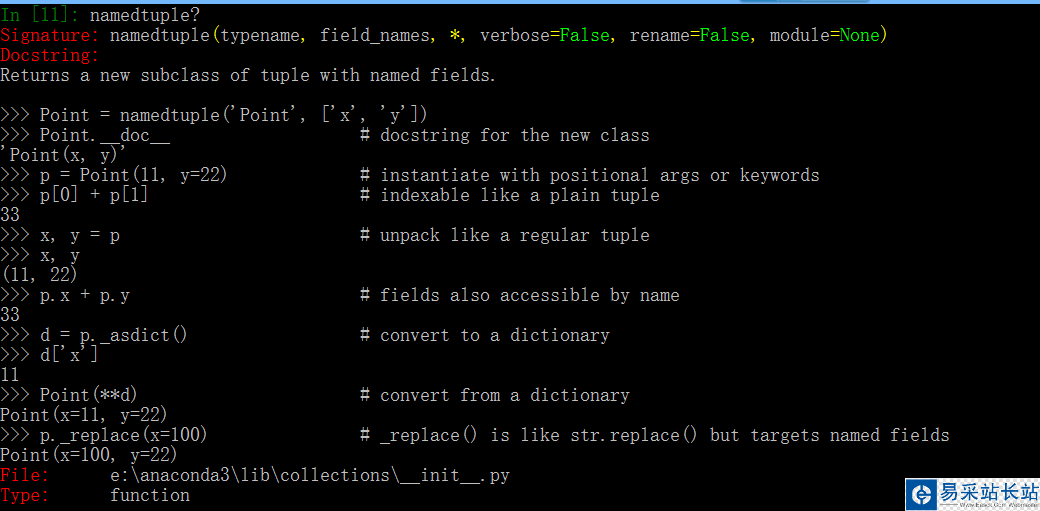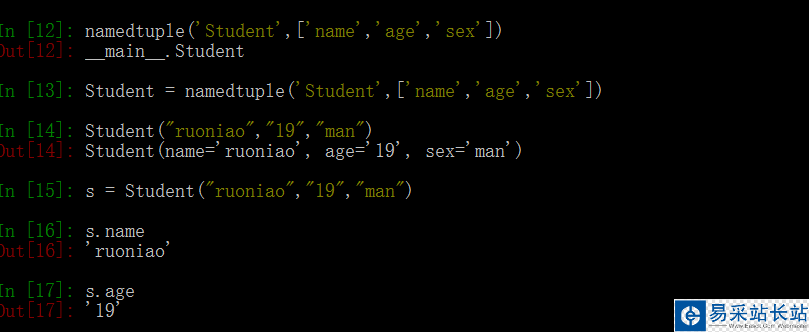元祖的创建
元祖创建很简单,只需要在括号中添加元素,并使用逗号隔开即可。
>>> temp=(1)>>> temp1>>> type(temp)<class 'int'>
>>> temp2=1,2,3,4,5>>> temp2(1, 2, 3, 4, 5)>>> type(temp2)<class 'tuple'>
>>> temp=[]>>> type(temp)<class 'list'>
>>> temp=()>>> type(temp)<class 'tuple'>
>>> temp=(1,)>>> temp(1,)>>> type(temp)<class 'tuple'>
对元组各个元素进行命名
1,通过对元组索引值的命名
2,通过标准库中的collections.nametuple替代内置touple
通过对元组索引值的命名
好比在c中的defined详细见代码
name,gender,age = range(3)student = ("ruioniao","man","19")student["name"]student["age"]student["gender"]#输出#"ruoniao"#19#man使用标准库中collections.nametuple代替内置的tuple


s这个变量名可以直接通过属性方式访问
Student是namedtuple的名称,后面的列表是其元素创建时还可以
s= Student(name="ruoniao",age="19",sex="man") #输出Student(name='ruoniao', age='19', sex='man')
可以通过‘点'像类访问属性那样进行访问
总结
以上就是这篇文章的全部内容了,希望本文的内容对大家的学习或者工作具有一定的参考学习价值,如果有疑问大家可以留言交流,谢谢大家对武林站长站的支持。
新闻热点
疑难解答